You are using an out of date browser. It may not display this or other websites correctly.
You should upgrade or use an alternative browser.
You should upgrade or use an alternative browser.
Nintendo Switch 2’s biggest competition isn’t PS5 or Xbox – it’s portable PCs
- Thread starter Lunatic_Gamer
- Start date
- Opinion Hardware
PonyStation4
Member
Nope.
Steam Deck battery life - 80 minutes +
Switch OLED battery life - 5 hours +
Different use cases.
Not true. If you run games on the Deck at 300p-540p and the lowest settings possible like the Switch, it would also last hours.
Last edited:
ChorizoPicozo
Member
nintendo doesn't make High-End consoles anymore. it has not competing with PS/Xbox since the Wii.
poppabk
Cheeks Spread for Digital Only Future
Eh, if you set Steam Deck to potato(Switch) mode you get the same battery life, not the best argument in a sea of them.
But then the whole argument in the OP falls apart.Not true. If you run games on the Deck at 300p-540p and the lowest settings possible like the Switch, it would also last hours.
THE DUCK
voted poster of the decade by bots
Nope, not yet anyhow, too many games don't run, not plug and play enough, no exclusive aaa, and advertising/distribution isn't there. Plus price is still an issue for most of them.
Now if ms or Sony were to lauch a portable hybrid, that would be real competion.
Now if ms or Sony were to lauch a portable hybrid, that would be real competion.
Last edited:
Exactly.I liked the "don't count Nintendo out yet" part.
Thanks for that, I was about to write them off based on some extremely weak one sided arguments reminiscent of how phones were going to kill consoles 10 years ago.
Kataploom
Gold Member
Not quite, those are barely like 5% of Switch total sales being generous, but yeah, I can definitely see them not wanting a situation where a machine cheap and powerful enough or phones can emulate their games better than official hardware runs them and thus thinking on a solution... Maybe increase hardware power or make "pro" versions half way.
The only reason Nintendo don't release more powerful hardware is because they don't want to rely on it to sell, they know software sells hardware more than power, but I can see them rethinking that if power benefits them more than it harms them (it's expensive, so more risk and less profits)
The only reason Nintendo don't release more powerful hardware is because they don't want to rely on it to sell, they know software sells hardware more than power, but I can see them rethinking that if power benefits them more than it harms them (it's expensive, so more risk and less profits)
Last edited:
CrustyBritches
Gold Member
The existence of the Steam Deck has nothing to do with competing in the handheld gaming console market. The Deck exists to pry PC gaming away from Windows. It's the tip of the spear for SteamOS and it's future iterations, and the physical manifestation of your Steam Library. In this regard, it's a resounding success with over 7000 games either 'Verified' or 'Playable' on Deck at this point in time.
It's a handheld gaming PC, and it is by far the best handheld gaming system I've ever used. It's large size belies how comfortable it is to play. The control layout, back-buttons, and trackpads are revelation for ergonomic functionality. The dual-mic setup is another little-known, high-quality feature with crystal clear sound for voice chat while playing. The Switch gaming library pales in comparison to rich depth and history of Steam games available for the system, with EGS and GoG as additional options. This isn't even getting into dual-boot Windows with GP PC and EA play, let alone emulation up to PS3 and Switch.
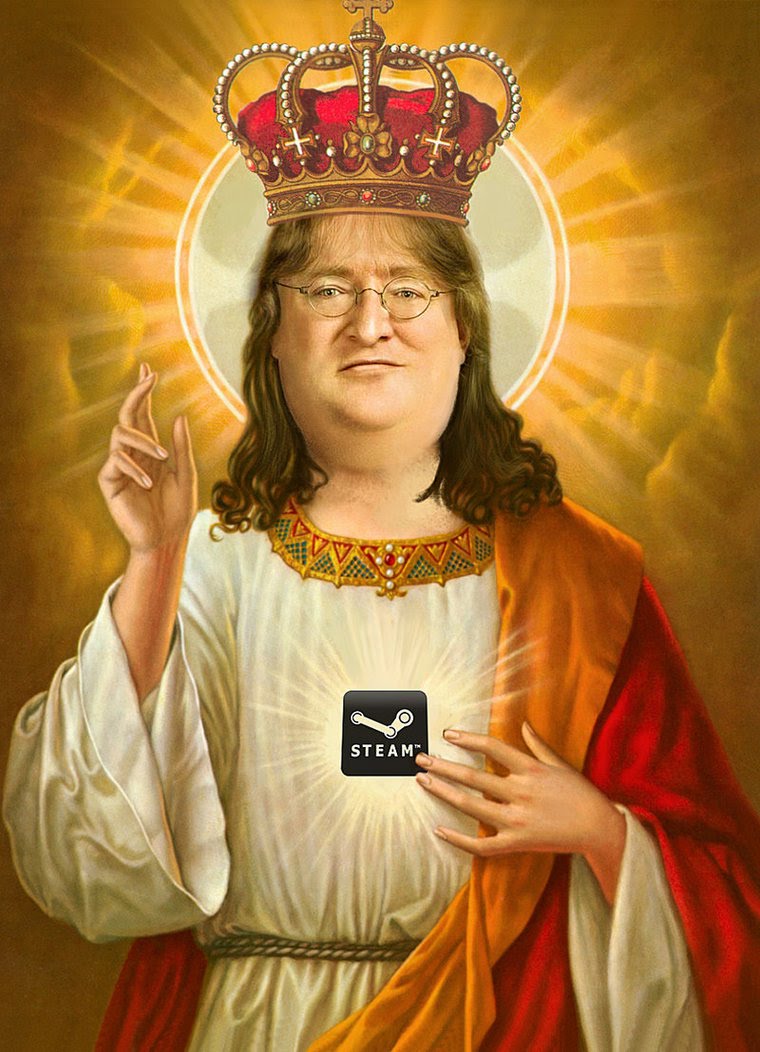
It's a handheld gaming PC, and it is by far the best handheld gaming system I've ever used. It's large size belies how comfortable it is to play. The control layout, back-buttons, and trackpads are revelation for ergonomic functionality. The dual-mic setup is another little-known, high-quality feature with crystal clear sound for voice chat while playing. The Switch gaming library pales in comparison to rich depth and history of Steam games available for the system, with EGS and GoG as additional options. This isn't even getting into dual-boot Windows with GP PC and EA play, let alone emulation up to PS3 and Switch.

Lucifers Beard
Member
Just from your title I'm going to tell you that you're wrong. Portable PCs are not competition for Nintendo Switch because they are 5x the price. The only valid option could potentially be Steam Deck but only from a power standpoint. Nobody is playing Switch because it's using cutting edge technology.
Nintendo have this thing called games, it's why they are ahead of any competition. They also dominate sales month on month from memory.
Nintendo have this thing called games, it's why they are ahead of any competition. They also dominate sales month on month from memory.
Woopah
Member
Competition is about more than just power. Wii was competing with PS/XB and Switch is still doing so today.nintendo doesn't make High-End consoles anymore. it has not competing with PS/Xbox since the Wii.
Exactly. Nintendo's approach to power with Switch 2 won't be "I want to show off greater specs" it will be "what power do I need to keep improving third party support ".Not quite, those are barely like 5% of Switch total sales being generous, but yeah, I can definitely see them not wanting a situation where a machine cheap and powerful enough or phones can emulate their games better than official hardware runs them and thus thinking on a solution... Maybe increase hardware power or make "pro" versions half way.
The only reason Nintendo don't release more powerful hardware is because they don't want to rely on it to sell, they know software sells hardware more than power, but I can see them rethinking that if power benefits them more than it happens them (it's expensive, so more risk and less profits)
Nautilus
Banned
Look, the Steam Deck is really cool and all, but in about a year it has sold how much? 1 or 2 million? The Switch barely has any competition in the hybrid space.
As always, gaming always comes down to games. And who's got the most competitive games(in terms of appeal) out there? Sony and MS.
Sony and MS will always be Nintendo's competitor, much like Nintendo is the biggest competitor for both Sony and MS.
As always, gaming always comes down to games. And who's got the most competitive games(in terms of appeal) out there? Sony and MS.
Sony and MS will always be Nintendo's competitor, much like Nintendo is the biggest competitor for both Sony and MS.
Silver Wattle
Gold Member

I say that as someone that has always viewed the switch as underpowered and very interested in the future of steamdeck.
People want Nintendo handhelds for their kids, it's become ingrained in developed countries to buy your kids Nintendo handhelds and games.
SmokedMeat
Gamer™
Nintendo has no competition in the console market. It has two bitches that it slaps around and tramples.
I really don't think Nintendo has competition. They are an island all to themselves, and their games are going to sell no matter what.
I really don't think Nintendo has competition. They are an island all to themselves, and their games are going to sell no matter what.
Shut0wen
Banned
You literally underestimate the power of parents, i dont know a single person that knows anything about a steam deck, if valve actually paid for advertisement then maybe, but theres no way nintenso fears the steamdeck lmao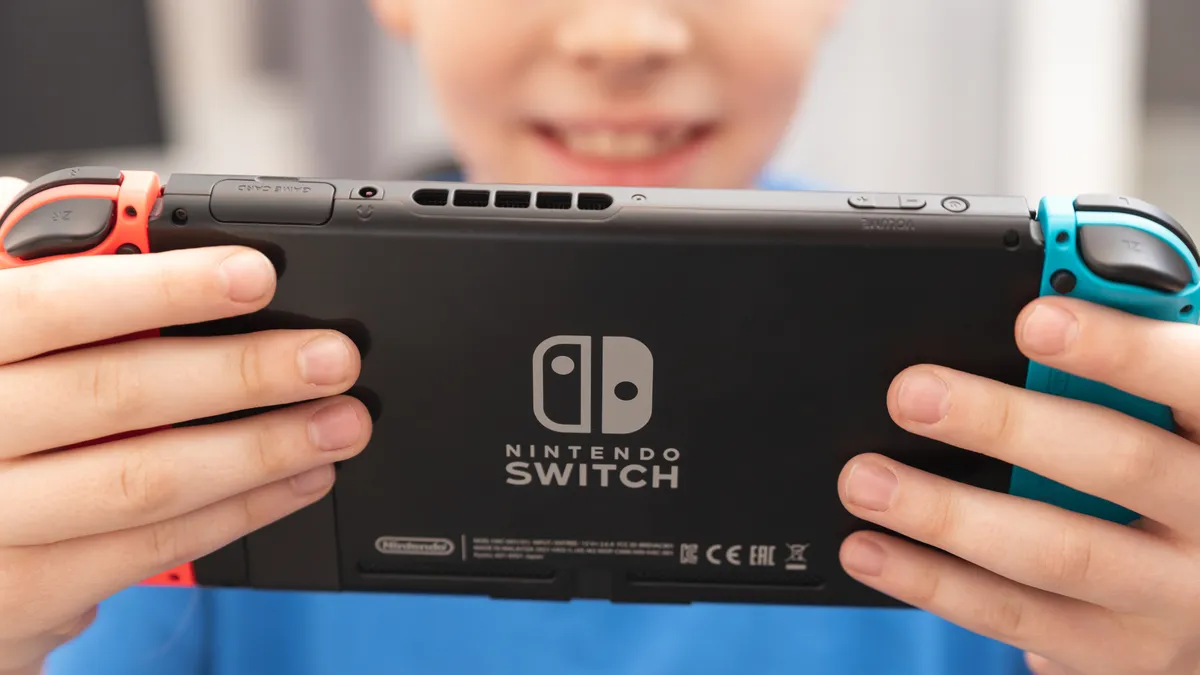
King of portable gaming: it was a crown that Nintendo seemed destined to wear in perpetuity when the Nintendo Switch launched in early 2017.
Here was Nintendo's magic at its best. Building on the ahead-of-its-time concepts of the ill-fated Wii U, it offered HD, touchscreen-capable gaming on-the-go, in a design that could also easily be paired up with a big-screen living room experience. It was the best of both worlds – Nintendo's home and handheld pursuits merging in an irresistible way. By mid-2022, 111 million Nintendo Switch consoles had been sold, putting it fifth on the list of best-selling consoles ever (a list, incidentally, that counts the Nintendo DS and Game Boy / Game Boy Color in positions 2 and 3, respectively).
But change sat just around the corner. In much the same way that smartphones had influenced Nintendo's move towards touchscreen tech, so too did the same miniaturization of processing power that fuelled the smartphone revolution trickle downstream to PC gaming. CPUs and GPUs designed for full-fledged computers were now small and efficient enough to fit in the palm of our hands – and in the Nintendo Switch, they had the perfect form-factor inspiration to fit those components in.
Jump to the year 2022, and Valve's Steam Deck is revealed. It's a beast. Backed by Valve's dominant Steam Store and interface, it houses internal AMD components comparable to desktop-grade Ryzen 3000 processors and Radeon RX 6000 series GPU performance. From Minesweeper to God of War, if it's available on PC, it'll run on a Steam Deck – and run well. With ergonomic controls (despite a large device footprint) and innovative touchpad controls for handheld keyboard-and-mouse style input, an ingenious 'Proton' compatibility layer opens up a wealth of Windows software to the Steam Deck despite its Linux foundations, all the while maintaining the Linux-level power efficiency that allows the Steam Deck to play for many hours on battery power alone.
The sleeping giant of PC gaming had awoken. Rather than just eyeing up Sony and Microsoft as competition, Nintendo now has PC/console hybrid manufacturers tracking it in their sights, leveraging the form factor that Nintendo had pioneered and had made the Switch so compelling.
Opening the floodgate
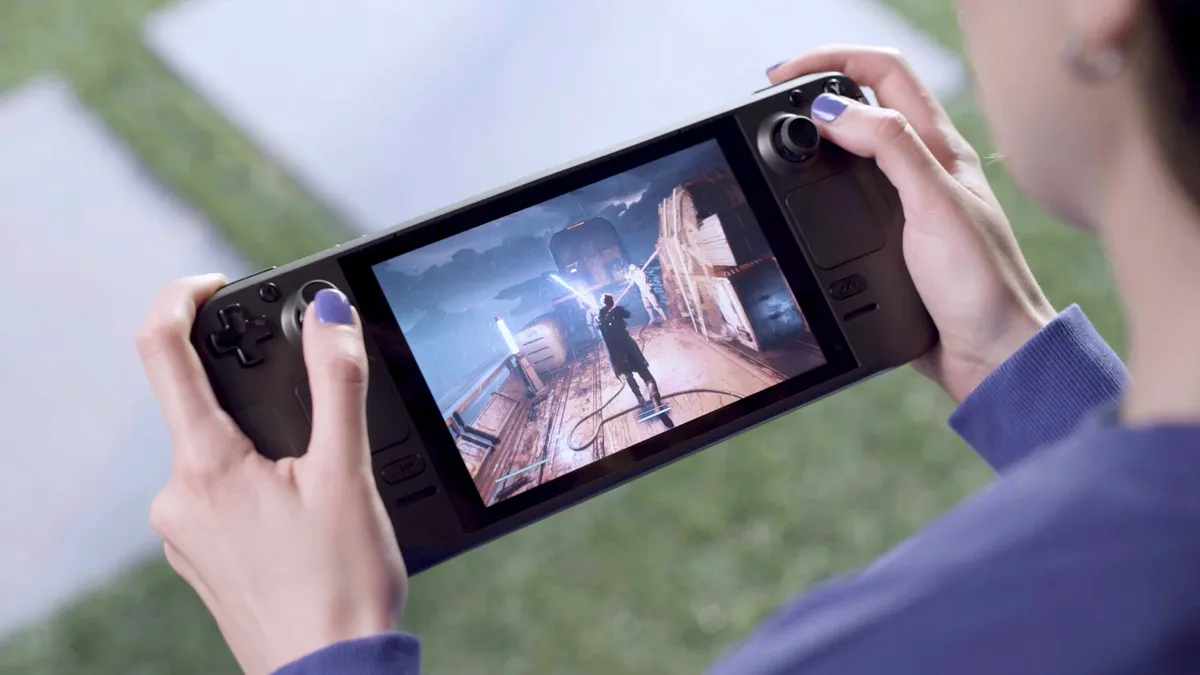
Valve has legitimized the handheld PC concept, and with that floodgate now open, more and more handheld PC manufacturers are entering the race, some with hardware even more exciting than the Steam Deck. Aya Neo has quietly been crowdfunding an entire range of portable PCs, and is growing a loyal army of fans. This year marks the launch of its Aya Neo 2 hardware, a portable gaming PC with an industrial design even more familiar to console gamers than the Steam Deck, and one that includes even more powerful AMD internals along with what's among the best screen we've ever seen in a handheld device. It's one of several new machines that Aya Neo is bringing to market this year, and its hardware waiting list of customers speaks to the growing popularity of – and trust in – the brand.
It's not just the portability factor that these machines ape, but the living room play, too. Both the Steam Deck, Aya Neo 2, and many similar portable PCs, can easily be docked in a cradle and hooked up to a TV, expanding their reach into becoming the dominant gaming machine not only in your backpack but while on your couch, too. While it's not quite the same all-in-one controllers/dock combo package that the Switch offers (you'll need to pick up some sold-separately accessories for the majority of these portable PCs), the option is there.
And with PC gaming an open market, these accessories come in all shapes, sizes, and – crucially – at all different price points, from the most basic keyboards and mice to esports-grade gamepads.
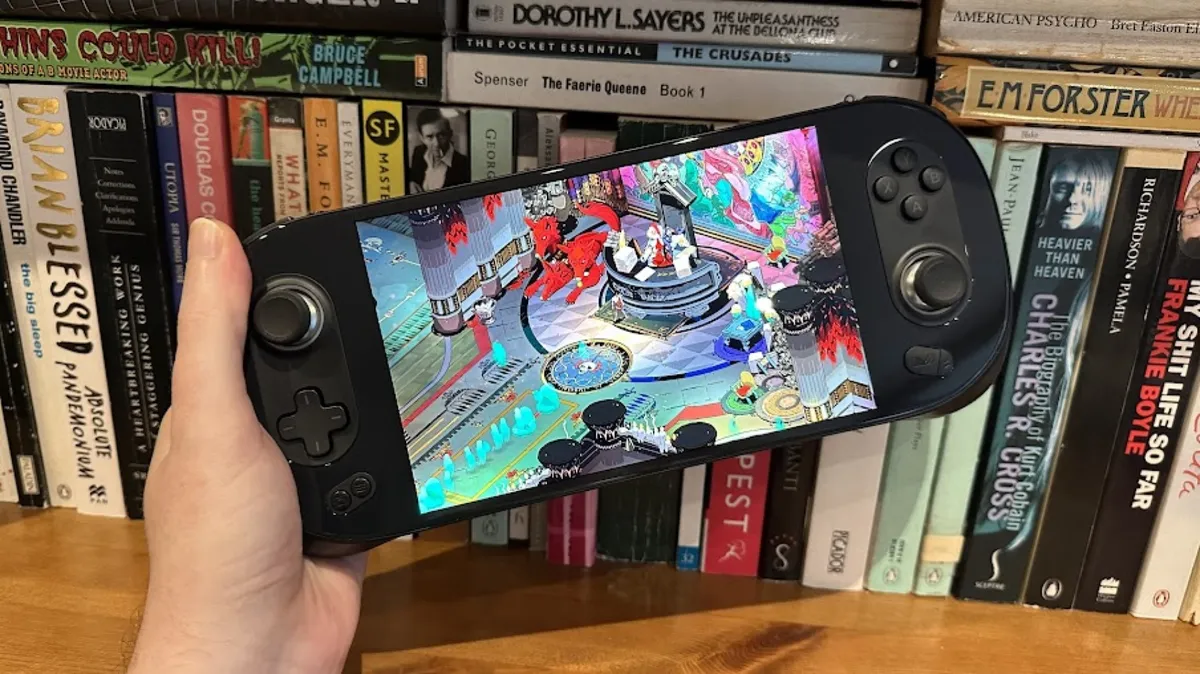
That degree of choice extends to the games and software you can install on these devices, too. Tending to run on either Windows or Linux, it doesn't take much computing knowledge to open up literally decades of games to these systems, from DOS classics to the growing range of recent ports from PlayStation and Xbox consoles. And you're not tied to one storefront either: though the Steam Deck encourages you to use Valve's Steam storefront, just like other PC handhelds it's a piece of cake to fire up games from Epic Games Store, Xbox for PC, Amazon Games, GOG and countless other sellers.
For many existing PC gamers, that means that picking up one of these PC handhelds gives them near-instant access to whatever back catalog of games they've built up over the years from these veteran services, while newbies can access the widest array of games available on any platform, from a range of competitively-priced merchants.
Depending on your budget and interests, the capabilities, software, and associated gear available to portable PC play is expansive.
That's before considering the threat of lower-powered Android handhelds like the Ayn Odin, the Ambernic RG552, or even smartphones themselves with accompanying controller shells like the Razer Kishi or Backbone. Smartphone gaming apps (and services like Apple Arcade) are increasingly controller-friendly, and Android-based handheld consoles are open, modifiable, and hackable in a way that Nintendo's lawyers should be very afraid of – it doesn't take a criminal mastermind to get a classic Mario game up and running on any of the devices listed above, the PCs included.
And, whereas Nintendo's console generation cycle lasts several years, perhaps with a mid-cycle refresh, these manufacturers are innovating and iterating month on month. While there may be no single company to threaten Nintendo's handheld dominance, the attack is coming from all fronts, from dozens of manufacturers, all happy to chip away at their own slithers of Nintendo's market share.
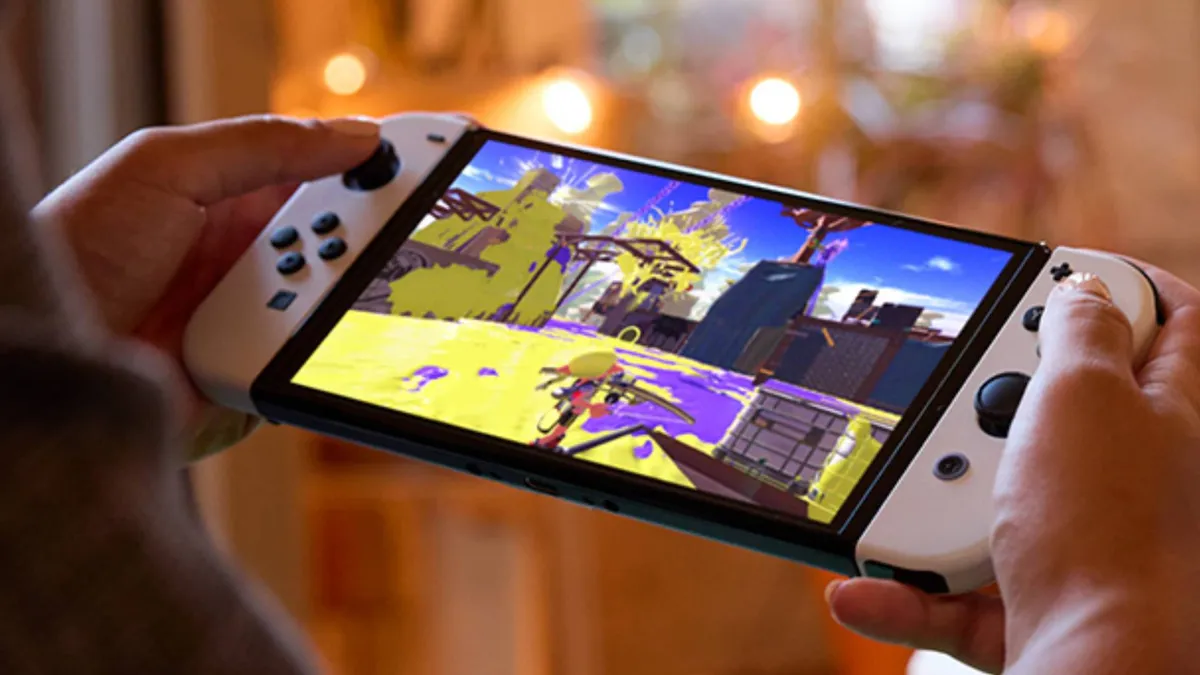
Don't count Nintendo out yet
Death by a thousand cuts, then? I won't write off Nintendo completely – the don't-call-it-a-comeback meteoric success of the Switch following the Wii U's ambulance-chasing naysayers has taught the industry to know better than that. Nintendo remains the only company in gaming capable of delivering something truly new and innovative (in the hardware space, at least), perhaps even challenging, while pairing that new toy with the tried-and-true classic characters and series that have come to define the medium.
We've waited years for a Nintendo Switch 2, tied over by Switch Lite and Switch OLED refreshes, more than enough time for Nintendo's engineers to have conjured some new transformational gaming magic all over again.
But the fact remains – the Switch as a hardware concept has been played, probed, and perfected, and not by Nintendo. PC gaming has its sights set not only on the living room, but the bus, train, plane, and playground. It'll take more than a dockable portable console for a new Nintendo Switch to be seen as innovative in its next guise.
https://www.techradar.com/features/...competition-isnt-ps5-or-xbox-its-portable-pcs
coffinbirth
Member
The OP never had a valid argument to begin with, IMO.But then the whole argument in the OP falls apart.
Quasicat
Member
I came close to buying a Steam Deck so that I could play games like Mass Effect on it without having to play around with getting emulation to work. I saw a video on YouTube on how to set it up to play it since you need an EA backend and need a mouse to select menus. All I want to do is pick it up and push the A button to start it. I could go the 360 emulation route, but even that seemed like more work than I want to put into it.
I will continue to remote play from my Xbox to my iPad. Maybe when Xenia comes to the Steam storefront and it's more plug and play.
I will continue to remote play from my Xbox to my iPad. Maybe when Xenia comes to the Steam storefront and it's more plug and play.
KungFucius
King Snowflake
This is asinine. No way in fuck am I buying a portable PC for my kids. They will make due with their switch 1/2 and tablets for portable STFU in the car moments.
BlackTron
Member
Lesson as old as time and keyboard warriors still try to tapdance all around it.GAMES are what boost HARDWARE sales.

